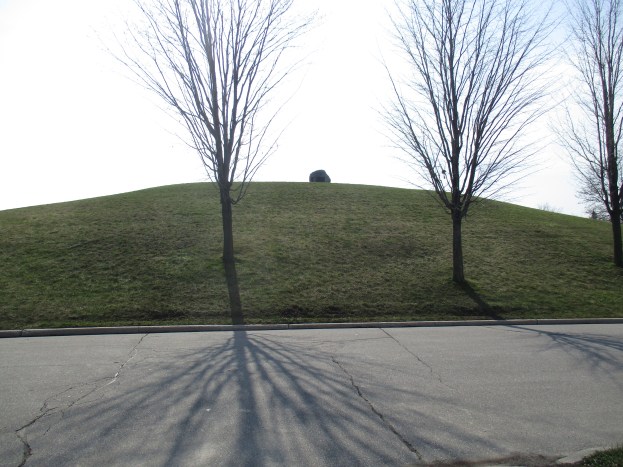Saturday, March 10, 2017
Starting in the 1920’s The boy Scouts had permission to use a piece of property in Scarborough for camping exercises. After buying the land, the Scouts carried on there until 1968 when the site was taken over by the Metropolitan Toronto Conservation Authority and added to Morningside Park. The buildings were removed but evidence of the camp must still exist. To see what could be found we made our way to the original entrance off of Plover Road. There are a couple of free parking spots on Plover Road or in the neighbourhood.
In 1907 Gen. Robert Baden-Powell started taking groups of boys to Brownsea Island in the UK and The Boy Scouts were born. Scouting began in Canada at about the same time. The Canadian General Council of The Boys Scout Association was incorporated by an act of parliament on June 12, 1914. The camp location was ideal because of the hilly terrain, winding creek and abundant wildlife. Being only 15 miles from Toronto it also meant that day trips for hiking and wiener roasts were even practical. The Toronto Council made regular trips here and eventually decided to purchase the property so that they could erect buildings on it. In 1936 the Lennox family sold approximately 100 acres to The Boy Scouts Association for their campground. A set of gates with a wide arch was erected just off of Plover Road.
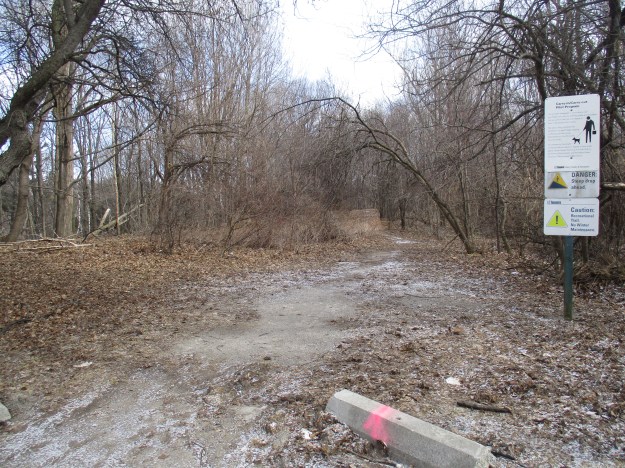
When it came time to name the new camp a contest was opened up for all the Scouts in Toronto and the name Camp Of The Crooked Creek was chosen. A chapel was provided for non-denominational worship services for the Scouts while on their weekend camping trips. A small wooden altar and a number of benches were scattered in the clearing seen below. It’s too bad they were removed because they would have made a great place for an outdoor educational program to be taught.
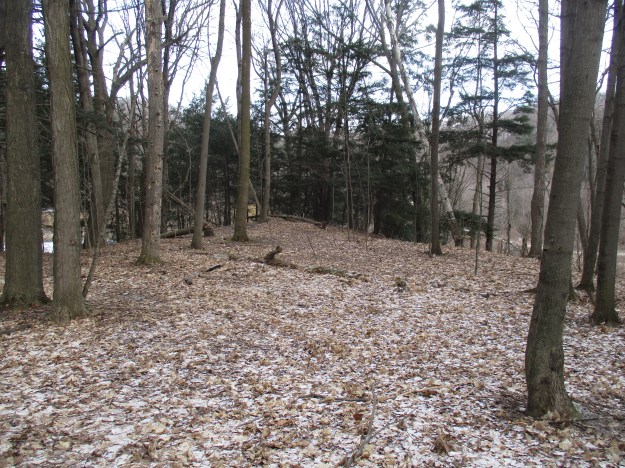
Tree roots form an informal stairway as you go up and down the hill between the location of the chapel and the creek below. Before the 1950’s everything the Scouts used in the valley below had to be carried up and down this hill.
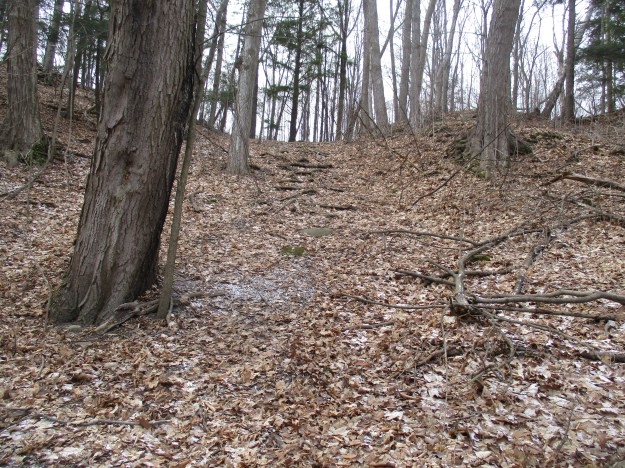
The most obvious remnant of the old campground is this bridge over the creek. Only, the creek isn’t here anymore, it is to the left in the picture below. The cover photo shows a side view and reveals where the creek used to run under the bridge. Most of the wooden handrails have rotted and fallen off of the bridge but the concrete and steel construction will remain for years to come.
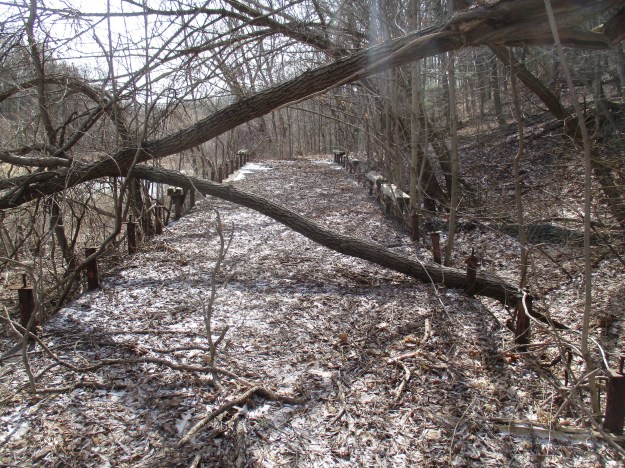
Eroded embankments show where the crooked creek used to run. There are half a dozen of these sandbanks along the section of the creek through the old camp. When the conservation authority took over managing the area they decided to move the creek to reduce flooding and erosion. The creek was widened and straightened and the former stream bed filled in leaving these eroded hills stranded from the creek that created them.

Every year the creek was dammed with rocks to create a swimming hole. Storms would sometimes breach the dam and the boys would set about repairing it. The old swimming hole was lost when the creek was re-routed and today the creek is so spread out that there is no place where you can wet more than your feet in the water, short of sitting down. When the water levels are low there are plenty of places where the creek can be crossed on foot. When the water level turns the creek into a barrier, or for the less adventurous, the other side of the old campground can be accessed through Morningside Park.

When Hurricane Hazel hit Toronto in October 1954 the campground was flooded. Fortunately, the campground was vacant at the time but in other parts of the city 81 people lost their lives. This prompted the conservation authorities across the city to start to buy up land that was in flood plains which they later turned into parkland. In keeping with this, in 1961 the camp was designated as a conservation school. It operated in this capacity until 1968 when it finally closed. That was when the creek was given a makeover including all the riffles added to ensure the water would be oxygen rich to support life.
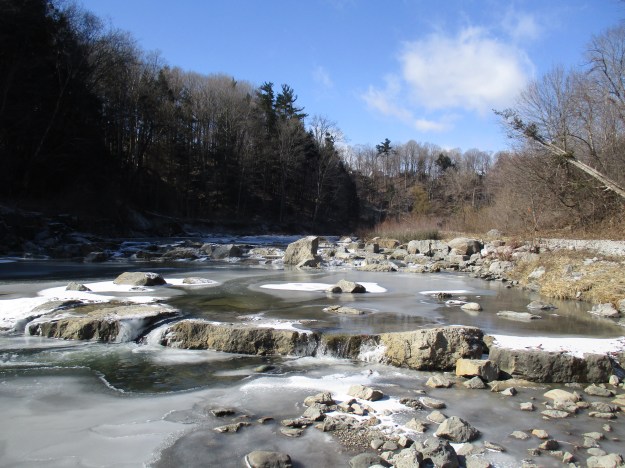
The main playing fields were on the east side of the creek. Today the former playing fields are taken up by a parking lot and picnic sites. The road through Morningside Park passes through an area that the Scouts had named Big Bear Swamp. The road is built over a section of the swamp that has been filled in. Invasive Phragmites are growing along the edge of the swamp. These tall reeds are allelopathic which means they release toxins into the soil that prevent the growth of competing plants. Each phragmite seed head can contain at least 2,000 seeds but they also spread from extensive rhizomes underground. Some of these rhizomes can be 30 metres long with a new plant growing every 30 centimetres along the length.

Near the Big Bear Swamp is an extensive patch of skunk cabbage. They produce their own heat to melt through the frozen ground so that they can bloom early. The outer leaves form a spathe which protects the delicate flower as the bud emerges from the ground. The pungent odour emitted from the flower attracts small insects that go inside the spathe to pollinate the flower. These first flowers of spring actually never open and contain none of the colourful petals we associate with flowers.

The old access way off of Plover Road descends the hill along the side of a small ravine. It makes a switchback as it curves back toward the old bridge in the ravine below the chapel. This road allowance was created in the 1950’s when the Scouts needed a new way to get their supplies to the bottom of the ravine. Prior to this, a local farmer had delivered things to the valley with his tractor.
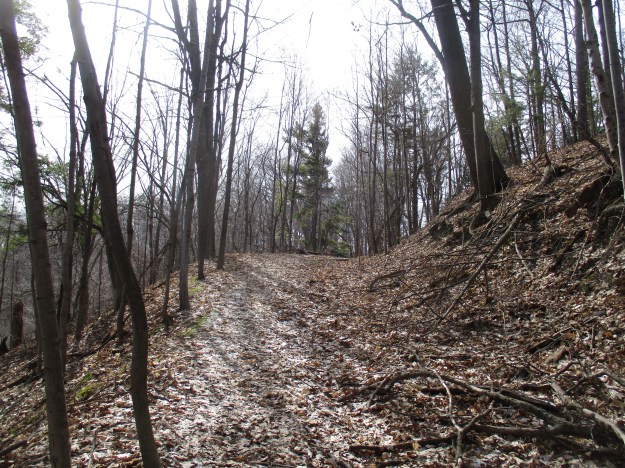
For additional reading and lots of historic photos the following web page is an excellent resource: Camp of the Crooked Creek
Recently we posted the top 15, reader selected stories in a special feature.
Google Maps Link: Morningside Park
Like us at http://www.facebook.com/hikingthegta
Follow us at http://www.hikingthegta.com




